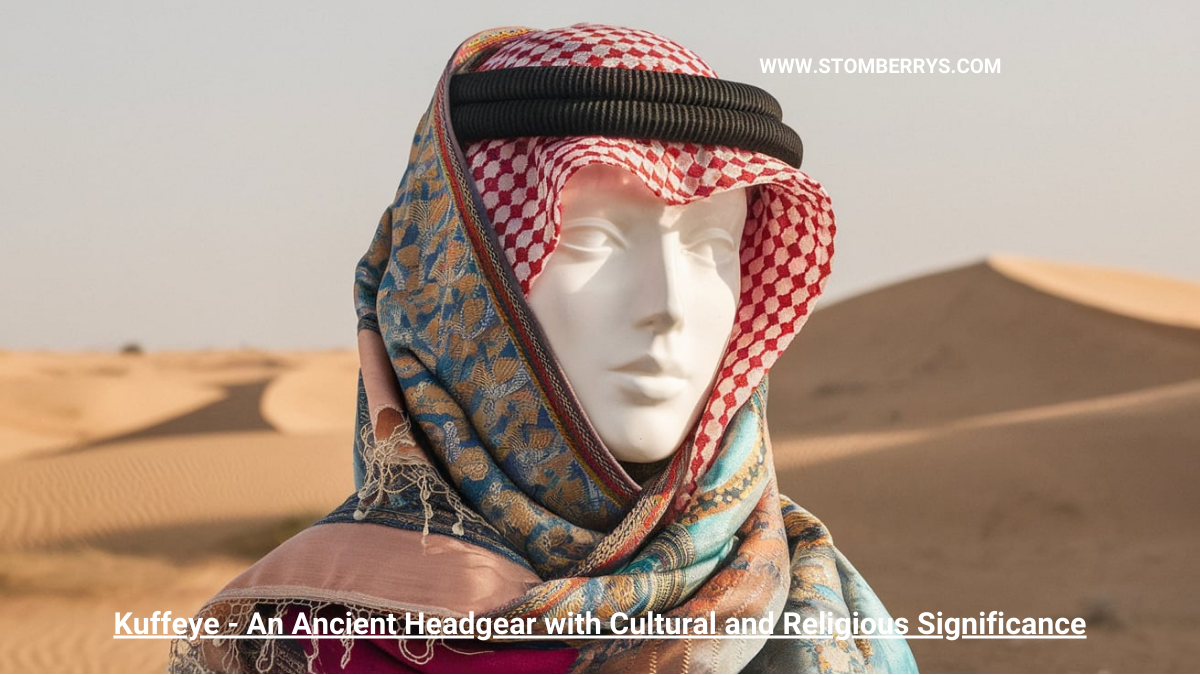Introduction to Kuffeye
The term “kuffeye” may not be widely known in every part of the world, but for those familiar with Middle Eastern attire and culture, it represents a deep-rooted tradition. Originating in the Middle East, the kuffeye is a traditional headgear with a rich history and cultural significance that spans thousands of years.
Worn predominantly by men, the kuffeye holds various meanings depending on the region and occasion. Its purpose ranges from providing protection from harsh desert climates to symbolizing social and religious status.
In this article, we will dive deep into the origins, cultural importance, religious significance, and modern uses of the kuffeye. We’ll also answer common questions about this headpiece to give you a well-rounded understanding of its role in today’s society.
What is a Kuffeye?
A kuffeye (sometimes spelled keffiyeh, kufiya, or kaffiyah) is a traditional Middle Eastern head covering made of a square piece of cloth, usually cotton or wool. It is often folded diagonally and worn as a headscarf. While the design of the kuffeye can vary, it is typically adorned with patterns, most commonly a black-and-white checkered style.
Historical Origins of the Kuffeye
The kuffeye has its roots in the desert cultures of the Arabian Peninsula and surrounding areas. Originally, it was worn as protection from the sun, wind, and dust by the Bedouins and farmers who worked in the harsh desert environment.
The practice of wearing the kuffeye gradually spread throughout the Middle East and North Africa (MENA) and became a symbol of identity, particularly for Palestinian people. However, its use can be traced even further back to ancient Mesopotamia, where it was worn by men in positions of power and influence.
The Cultural Significance of the Kuffeye
The kuffeye has transcended its utilitarian origins to become a potent cultural symbol. Today, it is recognized as a sign of solidarity, especially in relation to the Palestinian cause. While it holds deep political and social importance for Palestinians, the kuffeye is also worn in other Arab countries, with each region contributing to variations in color and style.
Different Styles and Colors
- Palestinian Kuffeye: Often black and white, the Palestinian kuffeye symbolizes resistance and unity.
- Jordanian Kuffeye: Typically red and white, this style is associated with Bedouin traditions and has become a national symbol of Jordan.
- Saudi Arabian Kuffeye: Worn in a red and white pattern, the Saudi kuffeye is a sign of cultural pride.
Religious Symbolism of the Kuffeye
While not inherently religious, the kuffeye has gained spiritual significance in certain Islamic traditions. For many Muslims, wearing the kuffeye can symbolize modesty and a connection to cultural roots. In some cases, it is worn during religious festivals and ceremonies, representing the importance of faith and tradition.
Modesty and Humility in Islam
In Islamic culture, modesty is a virtue. For men, wearing the kuffeye can be an expression of humility and modesty, shielding the wearer from the excesses of vanity and distraction. The kuffeye thus serves as more than a protective covering — it is a symbol of personal restraint and adherence to religious values.
The Kuffeye in Western Fashion
Interestingly, the kuffeye has found its way into Western fashion over the past few decades. It first became popular in the 1960s during the counterculture movement and has since been embraced by various fashion designers and celebrities as a style statement.
However, the commercialization of the kuffeye has not been without controversy. Many people feel that the use of the kuffeye in fashion has stripped it of its cultural and political significance, reducing it to a mere fashion accessory.
Modern-Day Uses of the Kuffeye
In contemporary society, the kuffeye is worn for various reasons:
- Cultural Identity: Many people from the Middle East wear the kuffeye as a symbol of their cultural heritage.
- Political Statement: In some contexts, wearing the kuffeye is a sign of political resistance or solidarity.
- Fashion Accessory: As mentioned, the kuffeye has been adopted by Western fashion, appearing in both streetwear and high-fashion settings.
- Protection: Despite its cultural and political symbolism, the kuffeye is still used for its original purpose — protecting the wearer from the elements in harsh climates.
How to Wear a Kuffeye
Learning to properly wear a kuffeye can be an art form in itself. Here’s a step-by-step guide on how to wear it traditionally:
- Fold the square cloth diagonally to create a triangle.
- Position the kuffeye on your head so that two of the points hang down over your shoulders, while the third corner covers your forehead.
- Secure the kuffeye by either tying the hanging corners at the back of your neck or securing it with a special headband known as an agal.
The way the kuffeye is worn can vary depending on regional and personal preferences, but the general method remains consistent.
Common Misconceptions About the Kuffeye
Despite its growing popularity, there are several misconceptions about the kuffeye:
- Not All Kuffeyes Are the Same: The design and symbolism of the kuffeye vary greatly depending on the region. For example, the black-and-white kuffeye associated with Palestinians has different cultural meanings compared to the red-and-white kuffeye worn in Jordan.
- It’s Not Just for Men: Although the kuffeye is traditionally worn by men, women in some cultures also wear it as a symbol of cultural pride.
- It’s Not a Religious Garment: While some associate the kuffeye with Islamic tradition, it is not a religious garment. Its significance lies more in its cultural and political symbolism.
FAQs About Kuffeye
Q: What is the purpose of wearing a kuffeye?
A: Originally, the kuffeye was worn to protect against sun, wind, and sand in desert environments. Today, it is also a symbol of cultural identity and solidarity.
Q: Can women wear a kuffeye?
A: Yes, although traditionally worn by men, women in some cultures wear the kuffeye to express cultural pride.
Q: Is the kuffeye a religious item?
A: No, the kuffeye is not inherently religious. It is primarily a cultural and political symbol, although some associate it with Islamic values.
Q: What is the significance of the colors in a kuffeye?
A: Different colors carry different meanings. For instance, black-and-white is often associated with Palestine, while red-and-white is common in Jordan and Saudi Arabia.
Conclusion
The kuffeye is much more than a simple piece of cloth. It is steeped in history, culture, and symbolism, making it one of the most recognizable and important garments in the Middle East. Whether worn for practical reasons, as a fashion statement, or as a sign of solidarity, the kuffeye continues to play a vital role in the lives of many people around the world.





